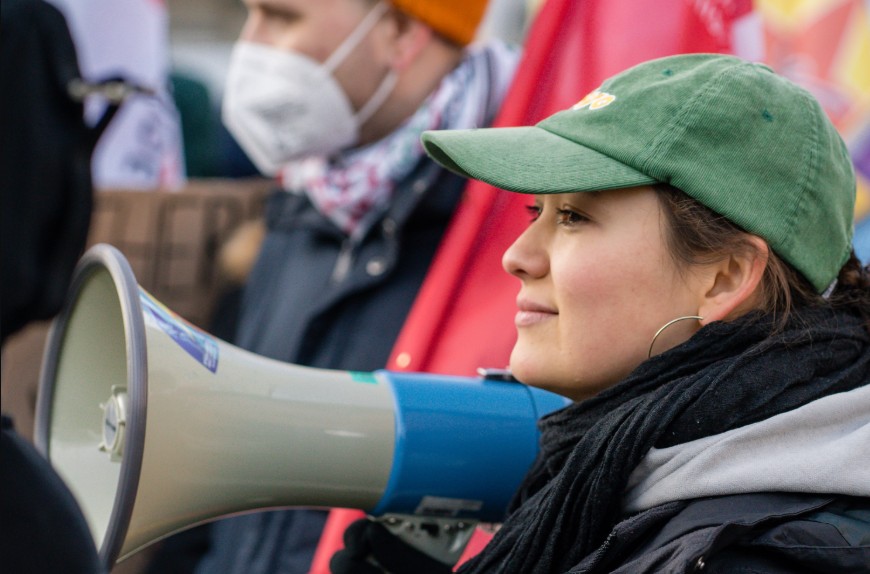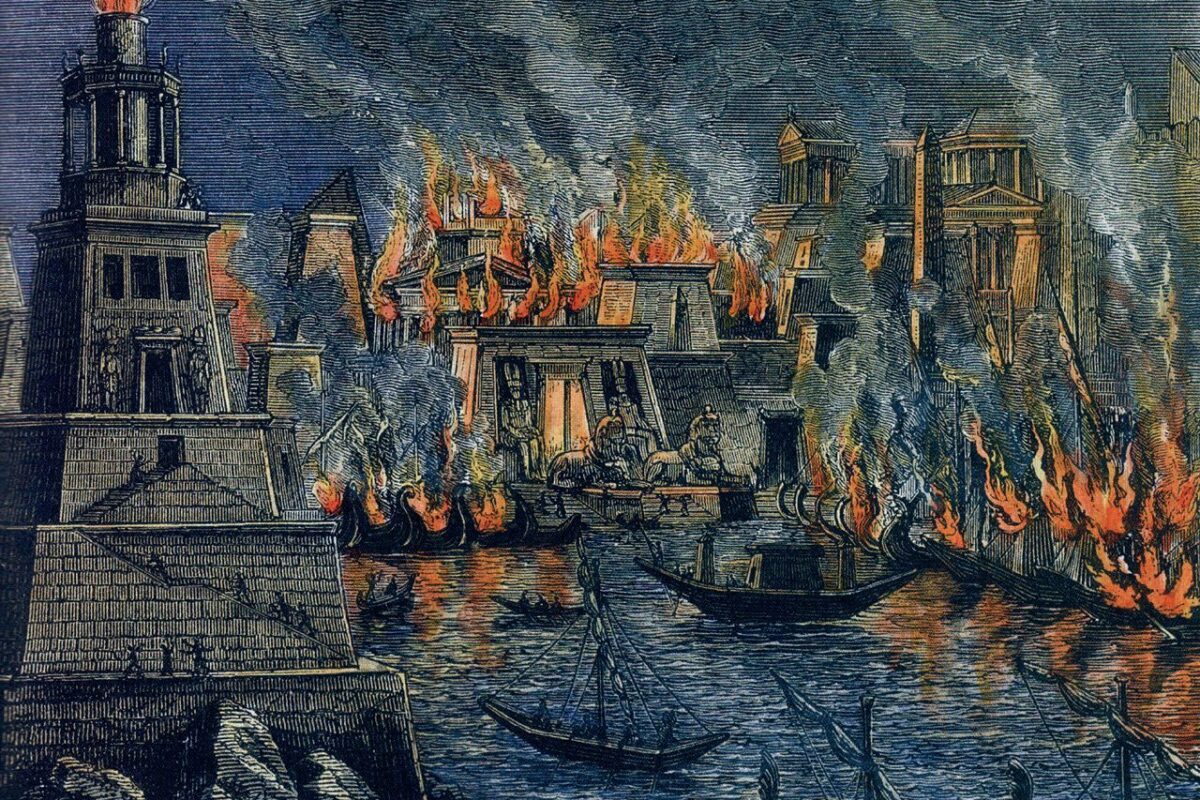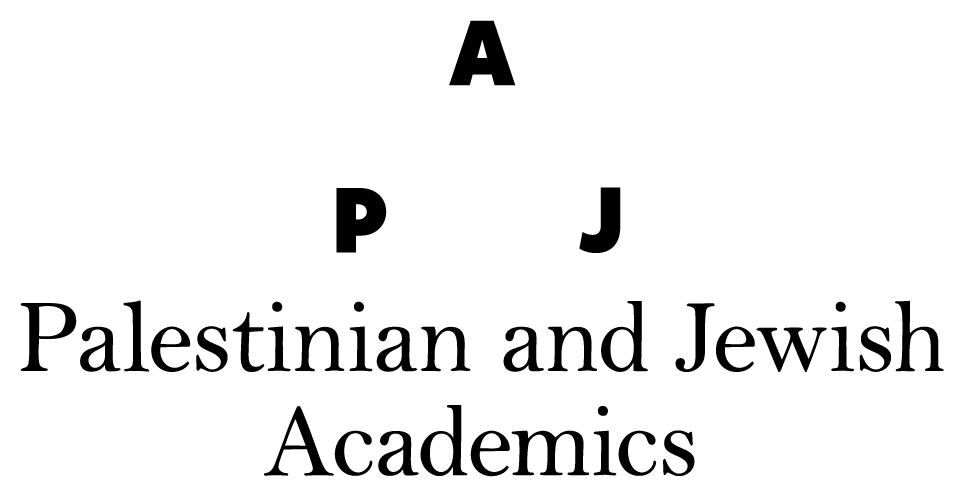The German elections on February 23 are set to produce the most right-wing Bundestag in at least a generation. The far-right AfD is currently above 20 percent in the polls, building on their victories in the fall and a bump from Elon Musk. Even more disturbingly, the conservative CDU, hovering around 30 percent, has adopted many of the AfD’s policies. On Wednesday, the CDU relied on the AfD’s votes to pass a Bundestag resolution attacking the right to asylum. Hundreds of thousands of people have been protesting against the Rechtsruck, the shift to the right — yet all major parties have responded by shifting to the right.
In this context, Die Linke, the reformist Left party, has been showing faint signs of life. After years of stagnation and decline, a certain sense of optimism has entered their ranks, as the most recent surveys put them at 5%, which is the threshold for getting seats in parliament. Five years ago, the party just barely squeezed in by winning three direct mandates. Could they just barely squeeze in again?
New Faces
The party has new faces like Ferat Koçak and Nam Duy Nguyen, who have both been attacked by police at antifascist mobilizations. Yet Die Linke’s campaign is not centered on popular young activists, but rather on three reformist politicians with long experiences of administering the capitalist state. Bodo Ramelow is the former prime minister of Thuringia, Dietmar Bartsch the leader of Die Linke’s parliamentary group, and Gregor Gysi is the party’s historical leader. All three of them — and really all top Die Linke representatives — have a long record of actively supporting Israeli apartheid.
Some of Die Linke’s most right-wing figures, such as Berlin’s former deputy mayor Klaus Lederer, left the party in a huff last October, accusing it of “antisemitism” for not being sufficiently supportive of Israel’s genocide in Gaza. (In reality, they were just looking for better career options, and some have already reappeared in the social democratic SPD) At the same time, Die Linke expelled the Palestinian activist Ramsis Kilani for his solidarity work. Under the new leadership of Ines Schwedter, former editor of Jacobin Germany, the party is trying to focus on economic issues while completely ignoring questions of imperialism.
Die Linke claims to have won 18,000 new members — which sounds like a lot, though this would only put them at 60,000, which is around what their membership had been 10 or 15 years ago. One does indeed see freshly organized young people knocking on doors. But this has a whiff of desperation — the last hope to keep someone vaguely left-wing in the Bundestag. Far from being a voice of fundamental opposition, the top candidates all aim to (re)join neoliberal government coalitions, where they can continue to carry out privatizations, deportations, and evictions, as Die Linke has done every day since its founding. In Saxony, for example, the party voted a CDU-SPD minority government into office.
We are told that a vote for Die Linke will “stop the right,” by making sure that someone, anyone in the Bundestag opposes the racist race-to-the-bottom that all other parties are engaged in. The problem, however, is that Die Linke has never consistently opposed racism. Ramelow and other “left” ministers have deported thousands of people, and will continue to do so if given the chance. When a party calling itself “The Left” claims that deportations are unavoidable and even necessary, this normalizes racism. Even worse, as Die Linke forms coalitions with the SPD and the Greens, and even makes deals with the CDU, this allows the far-right AfD to present itself as “alternative” to the all-party cartel.
The Sahra Wagenknecht Alliance (BSW) is also no alternative. After their meteoric start in the summer, when they overtook Die Linke in the European and East German elections, Wagenknecht’s new party has been stuck at 5-6% in the polls. There are many reasons for this, such as the authoritarian structures that allow only a small percentage of their supporters to become party members. The main reason, though, is that the BSW has already joined coalition governments in two states — if they can govern alongside the CDU and the SPD, they cannot be an alternative to politics-as-usual.
At the moment, Wagenknecht is criticizing the CDU from the right, arguing that their proposals to stop migration do not go far enough. Paradoxically, she is the only major German politician speaking up about the atrocities in Gaza and calling for a ceasefire, which only highlights the eerie silence from Die Linke.
Radical Left Resignation
How should socialists orient in this situation? It would be easy to latch onto Die Linke, hoping to win over those young people knocking on doors. This is what numerous groups from different revolutionary socialist traditions have done for the last 15 years. The problem is that this requires making excuses for the party’s constant betrayals. Many young activists join Die Linke only to turn away within a few months — and anticapitalist groups embedded in the party lose touch with them. Many working people do not feel represented at all in the political system, and have formed the basis of rebellions in a number of countries. A focus on Die Linke makes it impossible to address these sectors.
The last year saw something of an exodus of socialist groups from Die Linke — including, of course, The Left Berlin. After the network Marx21 split three ways a year ago, the section which was once the right wing of the network (which kept the name Marx21) continues to work in Die Linke. The left wing, called Revolutionäre Linke (RL), called for a clear break from the party. The center, Sozialismus von Unten (SvU), took a much more circuitous route to the exit, waiting almost a year before declaring they were leaving after Kilani’s expulsion in December. SvU’s most prominent face, former Die Linke MP Christine Buchholz, also announced her resignation — but her statement was far from a revolutionary break. She expressed her hope that Die Linke would return to “the strength of its early years” (when the party was part of multiple neoliberal governments!) and added she would “vote for Die Linke and encourage others to vote for it.”
RL and SvU have broken from Die Linke — yet still call on people to vote for the reformist party. Their “critical support” sounds more like resignation (you have to vote for someone!) than a revolutionary tactic. Both groups have called for voting for Die Linke “without illusions” (SvU uses the same formulation in an article in their print magazine that is not available online). Both claim that Die Linke will oppose racism if it gets into Bundestag, but as we’ve seen, that is an illusion.
Other groups like the SOL, the German section of the CWI, and the SAV, of the ISA, have dialed back from their long-term work in Die Linke over the last few years, yet are nonetheless campaigning for people to vote for the party. Their hypothesis is that Die Linke could be transformed into a fundamentally different party than it has been since its foundation. The GAM, the German section of the LFI, has not yet published a statement on the elections, but it seems likely they will yet again vote for Die Linke, as they have done for many years without joining the party.
Independent Candidacies
We from Klasse Gegen Klasse have been arguing for socialists to present a revolutionary alternative in these elections. As a result, RIO (publisher of Klasse Gegen Klasse) and the RSO have joined forces to present independent, working-class candidates: Inés Heider and Franziska Thomas in Berlin, as well as Leonie Lieb in Munich. They have been running on a platform to stop the genocide in Gaza and expropriate big capitalists. Despite our extremely limited resources, the campaign has gotten a lot of positive responses: people are happy to hear that there are candidates who object to politicians’ obscene corruption and only want to take a workers’ wage.
This campaign is not limited to RIO and the RSO. It is an open proposal to the radical Left — especially RL, SvU, SOL, SAV, GAM, and similar groups — to work together so we can make our voices heard at a time when bourgeois society puts a special focus on politics. This isn’t just about running candidates, either: revolutionary socialists of different stripes can work together, without hiding their differences, to fight against the shift to the right. The election campaign has already worked to mobilized people to block the AfD conference in Riesa, for example.The small breaks away from Die Linke have been progressive — but it’s only half a break if these activists continue campaigning and voting for a reformist party that helps administer the capitalist state. As Rosa Luxemburg explained more than a century ago, reformists and revolutionaries have fundamentally different goals. The 15 years since the foundation of Die Linke have shown that revolutionaries do themselves no favors when they present themselves to the masses as the left wing of reformism. Instead, we need to do everything we can to use the elections to make sure that anticapitalist ideas become visible in the political superstructure.





